Integrated Optoelectronic Position Sensor for Scanning Micromirrors
Abstract
:1. Introduction
2. The MEMS Mirror and the Position Sensing Principle
3. The Detailed Design of the MEMS/iOE-PS Module
3.1. Optical Design and Analysis
3.2. PD Design
3.3. Readout Circuit Design
3.4. Optical Simulation
3.4.1. Vertical Displacement Simulation
3.4.2. Tilting Angle Simulation
4. Experiments and Discussion
5. Conclusions
Acknowledgments
Author Contributions
Conflicts of Interest
References
- Ullal, K.V.; Sharan, P. Micro displacement sensor design based on photonic crystal emulating MOEMS for detection of acoustic signals. In Proceedings of the 2015 IEEE International Conference on Advance Computing Conference (IACC), Banglore, India, 12–13 June 2015; pp. 1236–1241. [Google Scholar] [CrossRef]
- Teo, A.J.T.; Li, H.K.H.; Tan, S.H.; Yoon, Y.J. Design optimization for an SOI MOEMS accelerometer. Microsyst. Technol. 2018, 24, 465–472. [Google Scholar] [CrossRef]
- Zhang, X.; Koppai, S.J.; Zhang, R.; Zhou, L.; Butler, E.; Xie, H. Wide-angle structured light with a scanning micro mirror in liquid. Opt. Express 2016, 24, 3479–3487. [Google Scholar] [CrossRef] [PubMed]
- Haindl, R.; Trasischker, W.; Baumann, B.; Pircher, M.; Hitzenberger, C.K. Three-beam Doppler optical coherence tomography using a facet prism telescope and micro mirror for improved transversal resolution. J. Mod. Opt. 2015, 62, 1781–1788. [Google Scholar] [CrossRef] [PubMed]
- Wang, W.; Samuelson, S.R.; Chen, J.; Xie, H. Miniaturizing Fourier Transform Spectrometer with an Electrothermal micro mirror. IEEE Photonics Technol. Lett. 2015, 27, 1418–1421. [Google Scholar] [CrossRef]
- Jain, A.; Todd, S.; Fedder, G.K.; Xie, H. A large-scanning-angle electrothermal SCS micromirror for biomedical imaging. Indiana Mag. Hist. 2003, 16, 29–46. [Google Scholar]
- Sampaioa, P.S.; Soaresa, A.; Castanhoa, A.; Almeidaa, A.S.; Oliveirac, J.; Brites, C. Optimization of rice amylose determination by NIR-spectroscopy using PLS chemometrics algorithms. Food Chem. 2018, 196–204. [Google Scholar] [CrossRef] [PubMed]
- Deng, Z.; Su, J.; Yang, X.; Zhang, D. Laser imaging based on digital micromirror device and its performance analysis. Laser Infrared 2015, 45, 1023–1027. [Google Scholar]
- Liu, Y.; Xu, J.; Long, Z.; Zhai, L.; Wu, Y. Large-scale MOEMS scanning mirror actuated by vertical comb. Opt. Precis. Eng. 2013, 21, 400–407. [Google Scholar]
- Zheng, X.; Lin, L.; Ichchou, M.N.; Chao, L. Hysteresis and the nonlinear Equivalent piezoelectric coefficient of MFCs for actuation. Chin. J. Aeronaut. 2017, 30, 88–98. [Google Scholar]
- Lu, A.; Zhang, Z.; Bai, Z.; Chen, Q.; Qin, S. Fourier transform infrared spectrometer based on electro-thermal MEMS micro-mirror. Infrared Laser Eng. 2016, 45, 1–7. [Google Scholar] [CrossRef]
- Tolvanen, J.; Hannu, J.; Jantunen, H. Hybrid Foam Pressure Sensor Utilizing Piezoresistive and Capacitive Sensing Mechanisms. IEEE Sens. J. 2017, 17, 4735–4746. [Google Scholar] [CrossRef]
- Tseng, V.F.-G.; Xie, H. Simultaneous piston position and tilt angle sensing for large vertical displacement micromirrors by frequency detection inductive sensing. Appl. Phys. Lett. 2015, 107, 214102. [Google Scholar] [CrossRef]
- Davis, J.W.O.; Sprague, R.; Miller, J. MEMS based pico projector display. In Proceedings of the IEEE/LEOS International Conference on Optical MEMS and Nanophotonics, Freiburg, Germany, 11–14 August 2008; pp. 31–32. [Google Scholar] [CrossRef]
- Schenk, H.; Durr, P.; Kunze, D.; Lakner, H.; Kuck, H. An electrostatically excited 2D-micro-scanningmirror with an in-plane configuration of the driving electrodes. In Proceedings of the IEEE Thirteenth Annual International Conference on Micro Electro Mechanical Systems, Miyazaki, Japan, 27 January 2000; pp. 473–478. [Google Scholar] [CrossRef]
- Ishikawa, I.; Sawada, R.; Higurashi, E.; Sanada, S.; Chino, D. Integrated micro-displacement sensor that measures tilting angle and linear movement of an external mirror. Sens. Actuators 2007, 138, 269–275. [Google Scholar] [CrossRef]
- Wu, L.; Xie, H. A tunable microlens with 0.9 mm scan range and small lateral shift. In Proceedings of the IEEE/LEOS International Conference on Optical MEMS and Nanophotonics, Clearwater, FL, USA, 17–20 August 2009; pp. 69–70. [Google Scholar] [CrossRef]
- Wang, L.; Hu, Z.; Ji, H. Laser spot center location algorithm based on Gaussian fitting. J. Appl. Opt. 2012, 33, 985–990. [Google Scholar]
- Tang, Y.; Gu, G.; Qian, W.; Chen, Q.; Zhang, J. Laser spot center location algorithm of four-quadrant detector based on Gaussian distribution. Infrared Laser Eng. 2017, 46, 206003. [Google Scholar] [CrossRef]
- Fan, C.; Cheng, X.; Yan, H.; Shi, X.; Zheng, M.; Xu, P.; Chen, C. Realization of a High Sensitivity Fully Integrated Receiver with Optimized Large-area Photodetector. Acta Photonics Sin. 2015, 44, 76–81. [Google Scholar] [CrossRef]
- Shi, X.; Wang, D.; Wang, F.; Zhao, Z.; Wang, S.; Han, B.; Niu, L.; Song, Y.; Li, J.; Wang, J.; et al. Research on high-speed optical receiver with integrated large photosensitive surface photodetector based on standard CMOS process. J. Optoelectron. Laser 2015, 26, 1460–1467. [Google Scholar] [CrossRef]
- CSMC. Available online: http://www.csmc.com.cn/ch/csmc-38.aspx (accessed on 14 December 2017).
- Cadence. Available online: https://www.cadence.com/content/cadence-www/global/en_US/home/tools.html (accessed on 3 September 2017).
- TracePro. Available online: https://www.lambdares.com/tracepro/ (accessed on 15 October 2017).
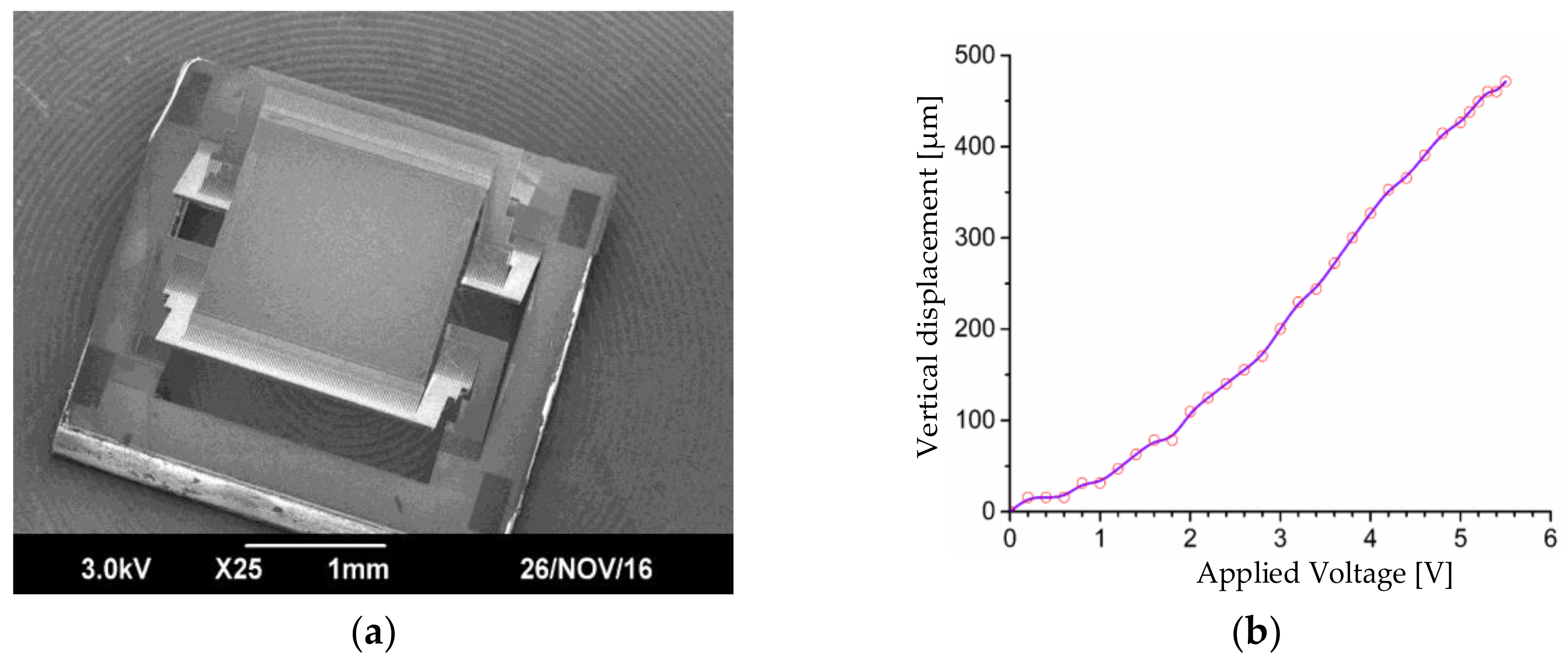

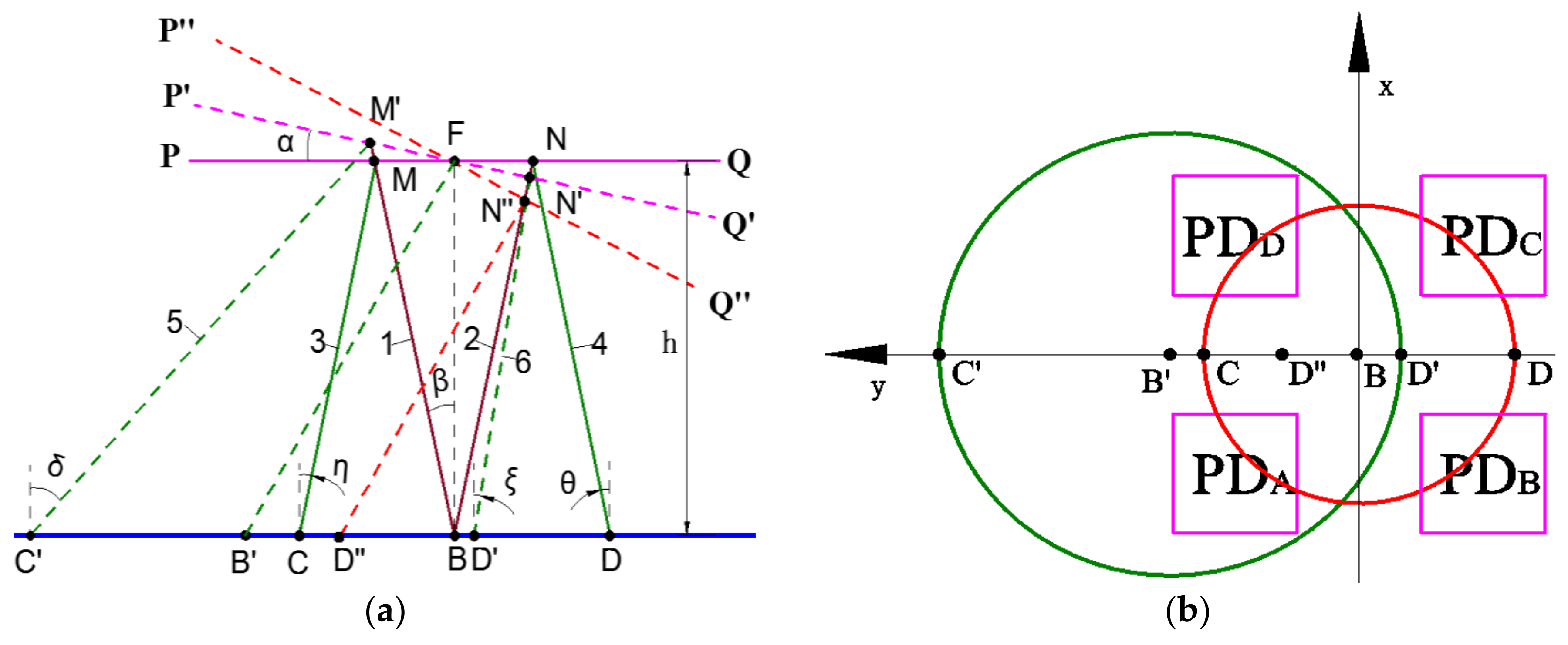

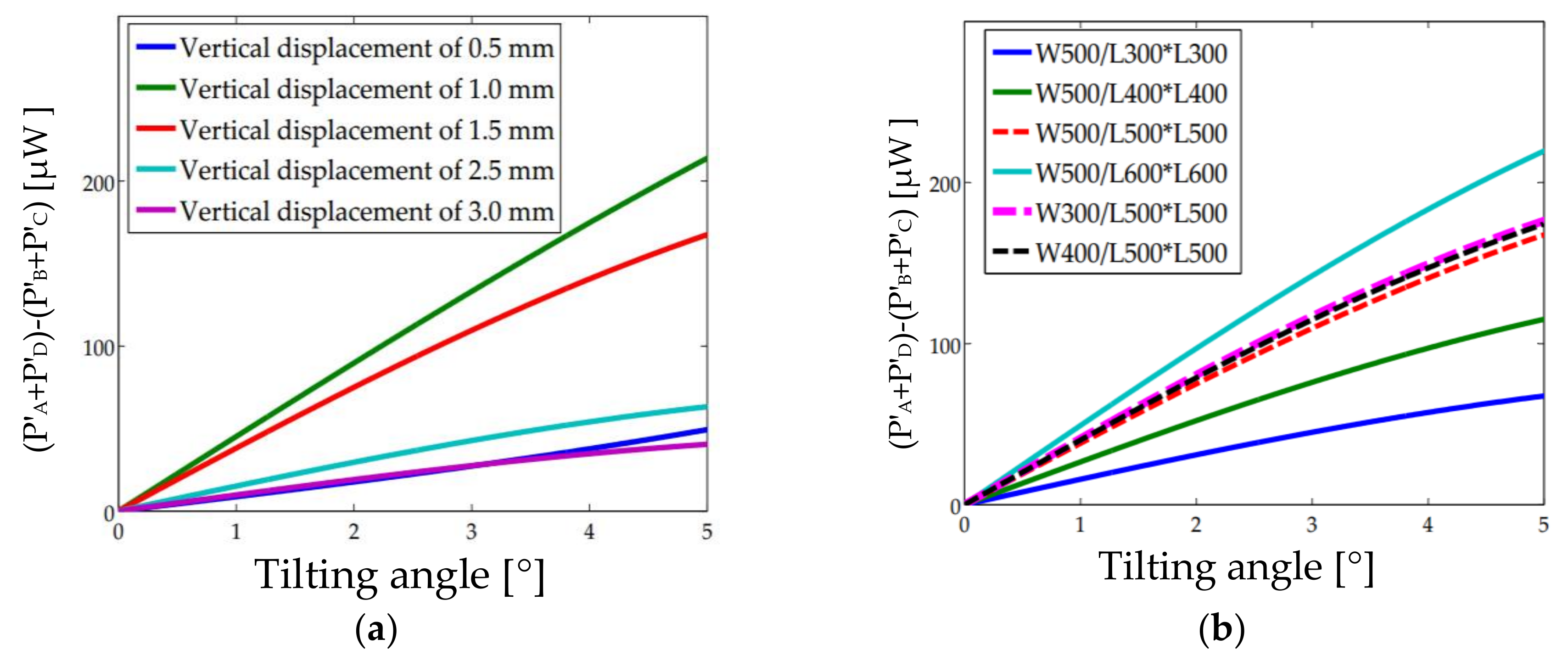
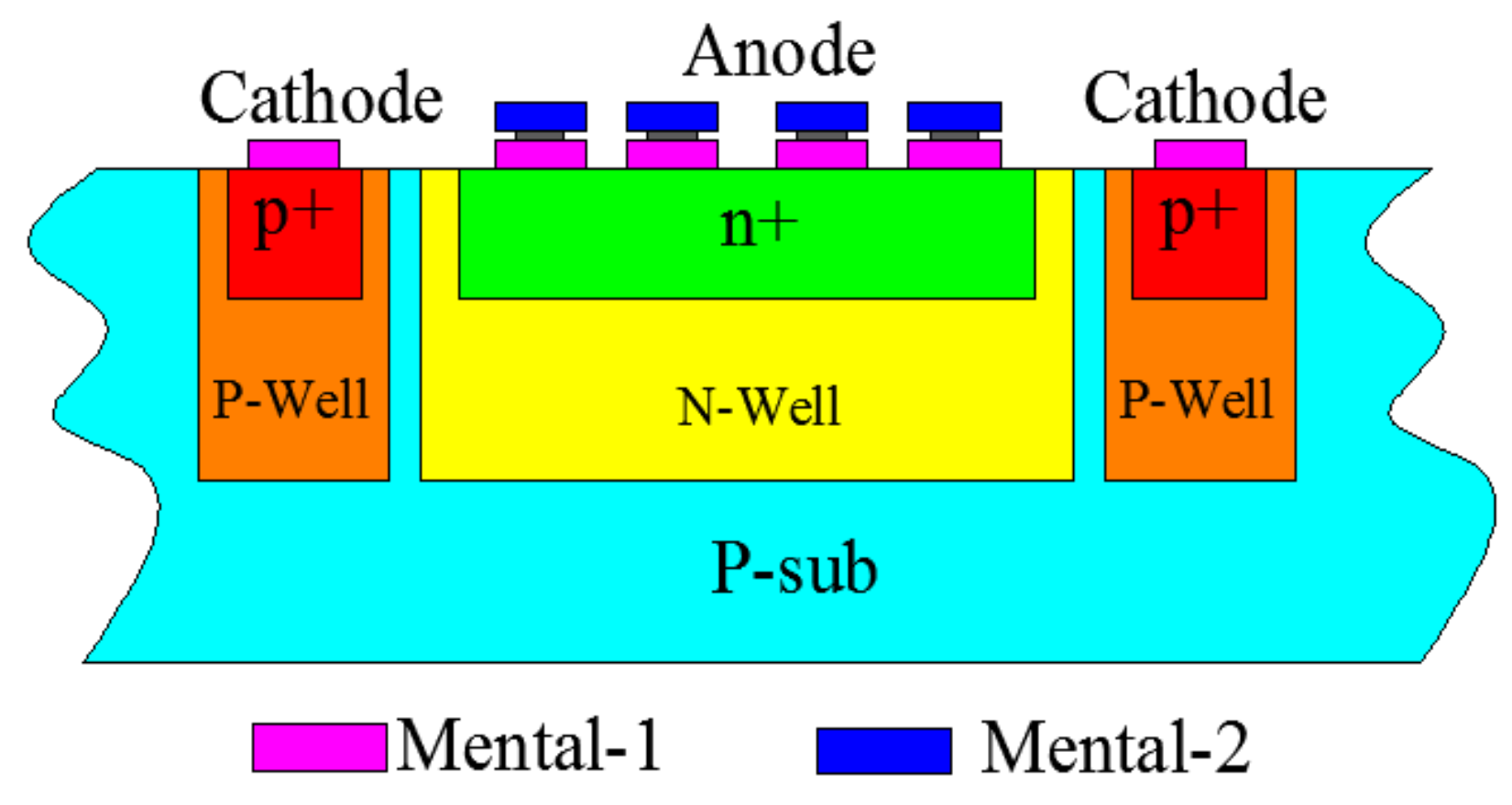
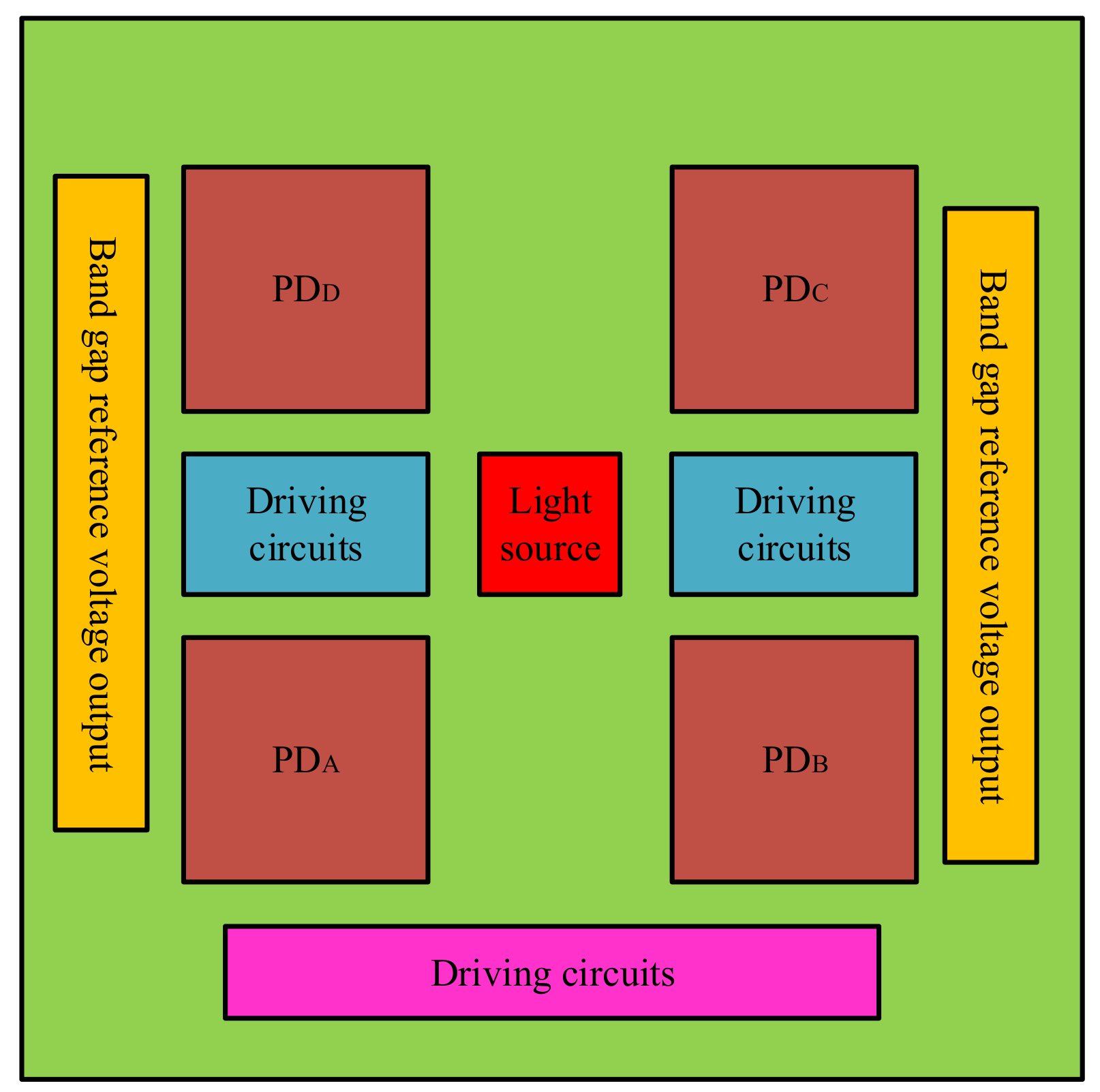

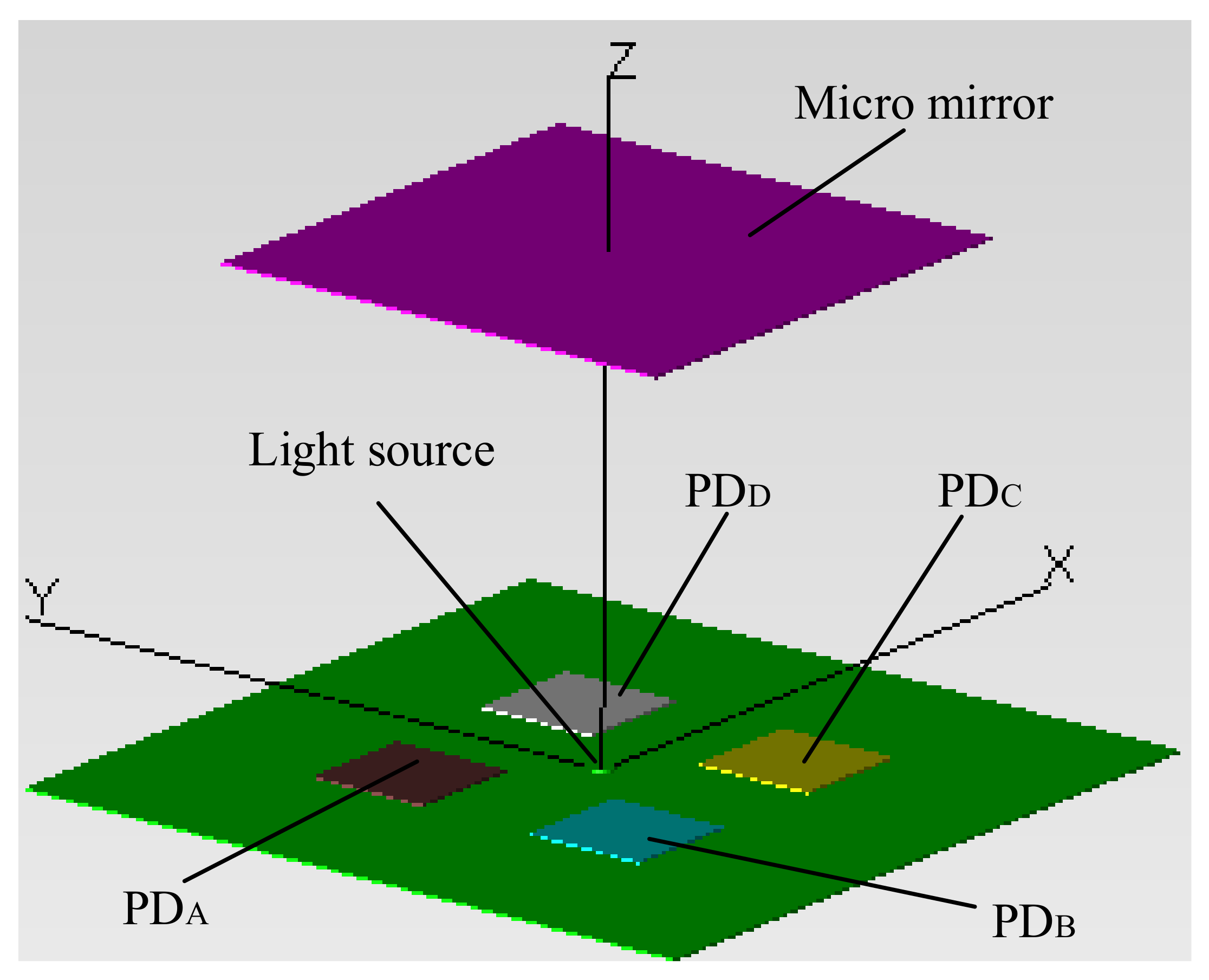
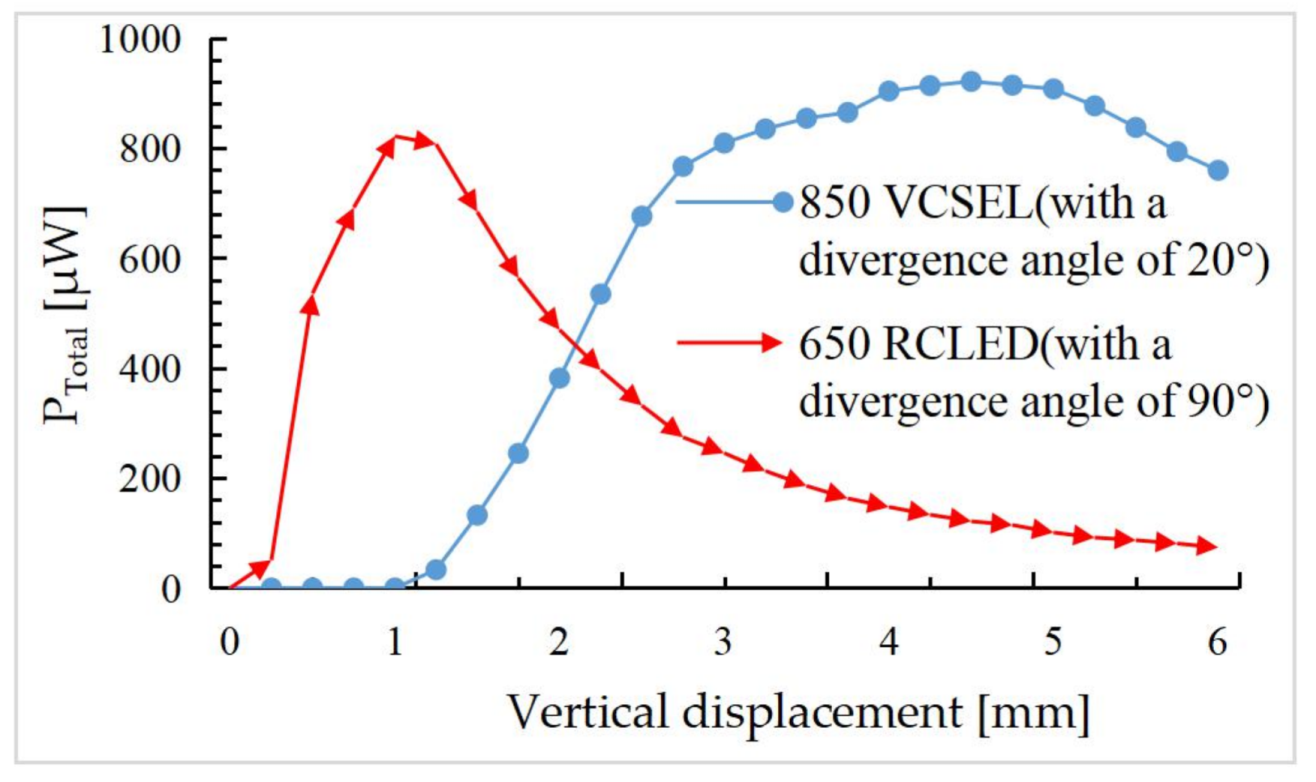
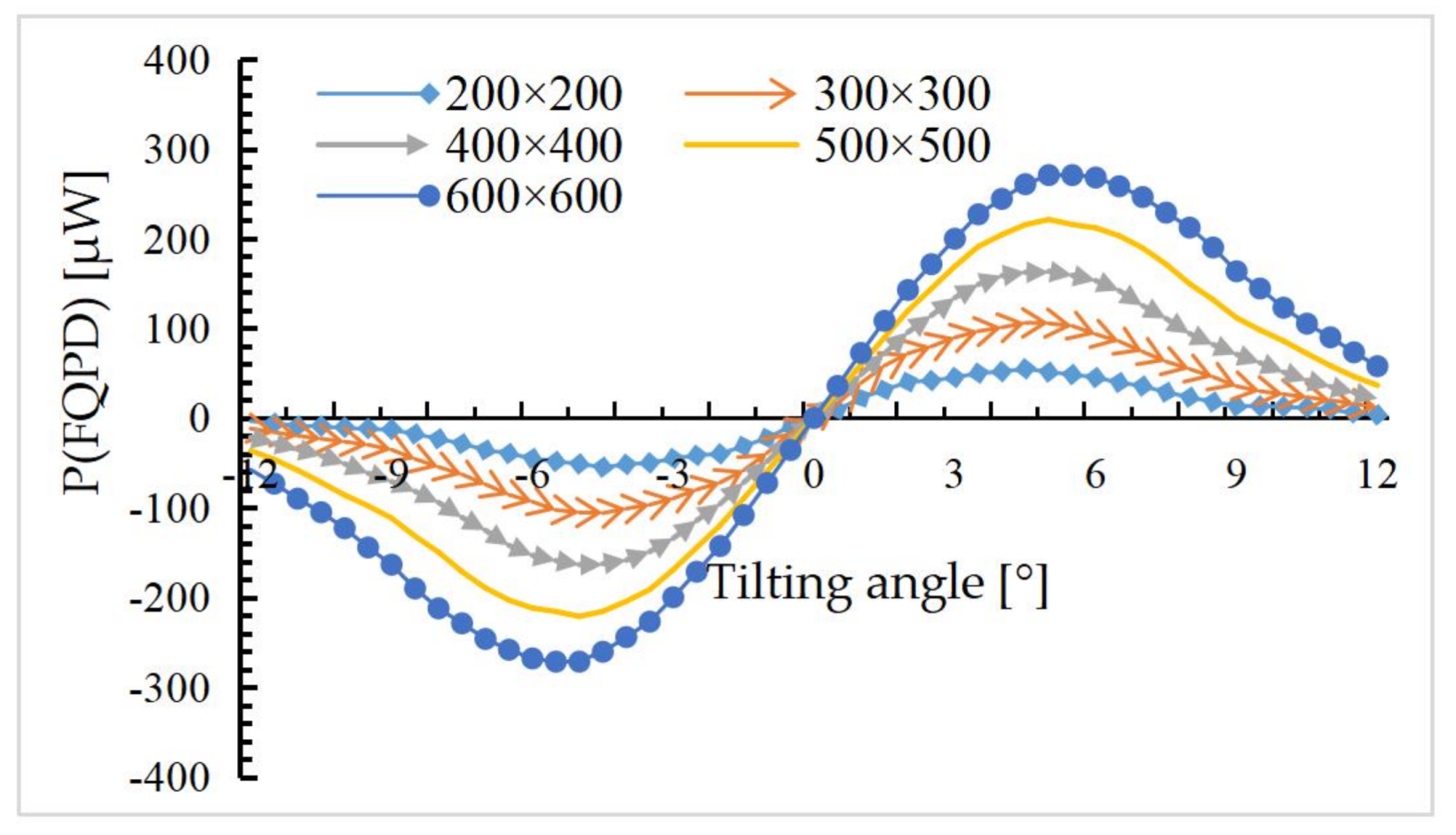



© 2018 by the authors. Licensee MDPI, Basel, Switzerland. This article is an open access article distributed under the terms and conditions of the Creative Commons Attribution (CC BY) license (http://creativecommons.org/licenses/by/4.0/).
Share and Cite
Cheng, X.; Sun, X.; Liu, Y.; Zhu, L.; Zhang, X.; Zhou, L.; Xie, H. Integrated Optoelectronic Position Sensor for Scanning Micromirrors. Sensors 2018, 18, 982. https://doi.org/10.3390/s18040982
Cheng X, Sun X, Liu Y, Zhu L, Zhang X, Zhou L, Xie H. Integrated Optoelectronic Position Sensor for Scanning Micromirrors. Sensors. 2018; 18(4):982. https://doi.org/10.3390/s18040982
Chicago/Turabian StyleCheng, Xiang, Xinglin Sun, Yan Liu, Lijun Zhu, Xiaoyang Zhang, Liang Zhou, and Huikai Xie. 2018. "Integrated Optoelectronic Position Sensor for Scanning Micromirrors" Sensors 18, no. 4: 982. https://doi.org/10.3390/s18040982
APA StyleCheng, X., Sun, X., Liu, Y., Zhu, L., Zhang, X., Zhou, L., & Xie, H. (2018). Integrated Optoelectronic Position Sensor for Scanning Micromirrors. Sensors, 18(4), 982. https://doi.org/10.3390/s18040982





